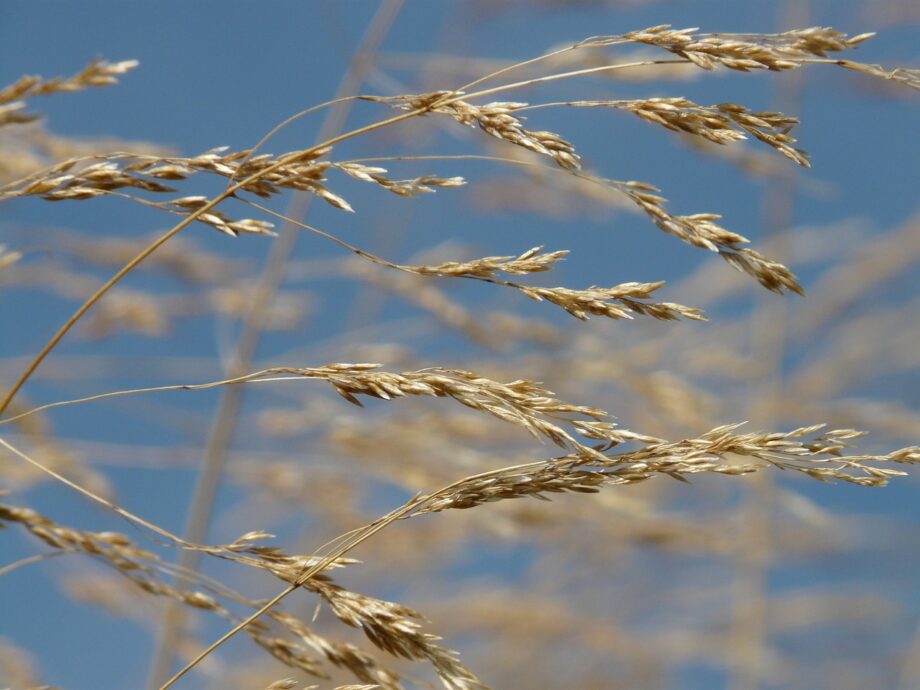Buffel grass in Kenya (Cenchrus ciliaris) is a species of grass that is native to Africa but has been introduced to many other parts of the world, including Kenya.
Buffel grass is a highly valued forage plant that is commonly used in pasture and range management, as well as for erosion control and land reclamation.
In Kenya, buffelgrass has been widely introduced and is commonly found in arid and semi-arid areas, particularly in the northern parts of the country.
It is popular among farmers and pastoralists because of its high forage yield and good nutritional value for livestock.
However, buffelgrass is also known to have negative impacts on native ecosystems, as it can outcompete and displace native plant species, reduce biodiversity, and increase the risk of wildfire.
In some cases, it can also have negative impacts on water resources by increasing water consumption and reducing infiltration rates.
Therefore, the use of buffel grass in Kenya should be carefully managed to minimize its negative impacts on the environment and ensure that it is used sustainably to meet the needs of farmers and pastoralists.
Buffel Grass Benefits
Cenchrus ciliaris is a valuable plant species with many benefits, particularly in regions that experience drought and low rainfall. Here are some of the benefits of buffel grass:
- Forage production: Buffel grass is a highly productive forage plant, and it can produce large quantities of high-quality forage for livestock, particularly cattle, and sheep. It is often used as a pasture grass in arid and semi-arid areas, where other forage plants may not grow well.
- Drought tolerance: It is well adapted to drought conditions and can survive with very little rainfall. This makes it an important plant species in areas where water is scarce.
- Erosion control: Buffel grass has a deep and extensive root system, which helps to stabilize soil and prevent erosion. It is often used in reclamation projects to restore degraded lands.
- Wildlife habitat: Can provide habitat for a variety of wildlife species, particularly birds and small mammals.
- Carbon sequestration: Like other plant species, buffelgrass can help to sequester carbon from the atmosphere, which can help to mitigate climate change.
Overall, buffelgrass is a valuable plant species that can provide many benefits, particularly in arid and semi-arid regions. However, it is important to carefully manage its use to prevent its negative impacts on native ecosystems.
Buffel Grass Seed In Kenya
The price of buffel grass seed in Kenya can vary depending on several factors, such as the quality of the seed, the variety of buffel grass, and the location of the seller.
However, the average price of buffel grass seed in Kenya is around Ksh 500 to Ksh 800 per kilogram.
It is important to note that the price can vary depending on the quantity being purchased. Larger quantities may be available at a discounted rate, while smaller quantities may be sold at a slightly higher price per kilogram.
Additionally, some suppliers may offer a lower price for certain varieties of buffel grass seed over others.
Buffel Grass Varieties
There are several different varieties of buffel grass, each with unique characteristics and adaptations to different environmental conditions.
- Common buffel grass: The most widely cultivated variety of buffelgrass is the common buffel grass (Cenchrus ciliaris var. ciliaris), which is native to Africa. This variety has a high drought tolerance and can produce large quantities of forage, making it a popular choice for pasture and range management.
- Texas buffel grass: Another common variety of buffelgrass is the Texas buffel grass (Cenchrus ciliaris var. texensis), which is native to the southern United States. This variety is highly drought-tolerant and can grow in a wide range of soil types, making it a popular choice for forage production in arid and semi-arid regions.
- Biloela buffel grass: The Biloela buffel grass (Cenchrus ciliaris var. Biloela) is a variety that was developed in Australia. It has a high forage yield and is well adapted to tropical and subtropical regions, making it a popular choice for pasture and range management in Australia and other parts of the world.
- Giant buffel grass: The giant buffel grass (Cenchrus ciliaris var. aridus) is a variety that is native to Africa and is well adapted to arid and semi-arid regions. It has a deep root system that allows it to access water from deeper soil layers, making it highly drought-tolerant.
- West Australian buffel grass: The West Australian buffel grass (Cenchrus ciliaris var. pubescens) is a variety that is native to Australia and is well adapted to arid and semi-arid regions. It has a high forage yield and is particularly well-suited to sandy soils.
Conclusion
There are several different varieties of buffel grass that have been introduced to Kenya and are widely cultivated in the country’s arid and semi-arid areas.
Each variety has unique adaptations and characteristics that make them suitable for different environmental conditions.
It is important for farmers and pastoralists to select the appropriate variety of buffel grass for their particular location to ensure optimal productivity and environmental sustainability.




